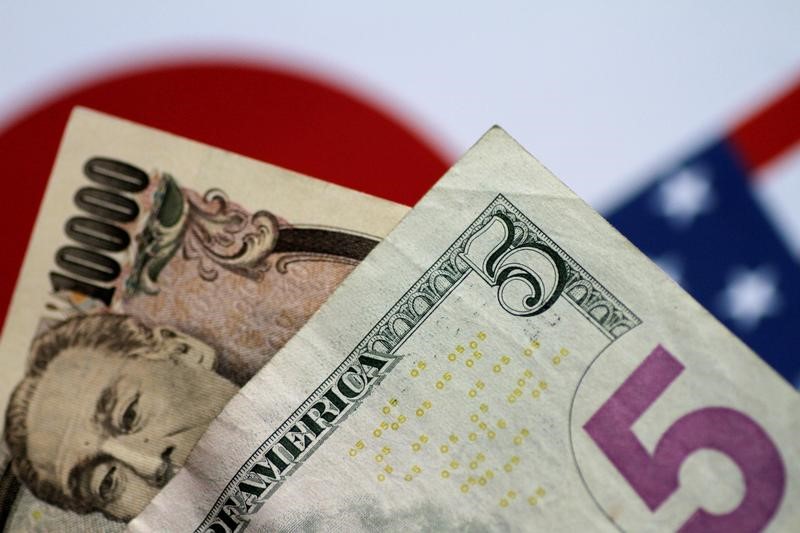
But the Chinese yuan lagged its peers, as did the Australian dollar following more weak economic signals from Asia’s biggest economy.
The dollar index and dollar index futures were nursing steep losses after Federal Reserve Chair Jerome Powell said on Wednesday that a September rate cut was possible on more encouraging inflation and labor market data.
His comments saw markets almost entirely pricing in a 25 basis point cut in September, along with a small chance of a 50 bps cut, CME Fedwatch showed.
The prospect of lower interest rates boosted most Asian currencies.
The yen was the best performer in Asia on Thursday, extending strong gains from the prior session after the Bank of Japan raised interest rates and flagged more potential increases this year.
The yen’s USDJPY pair dropped past the 150 yen level for the first time since March, extending a sharp decline seen through most of July.
The BOJ hiked its short-term interest rate by 15 basis points and flagged plans to halve its pace of quantitative easing only by early-2026. The yen had initially logged a volatile reaction to this move, given that the extended timeline for cutting back QE was viewed as dovish.
But comments from Governor Kazuo Ueda tilted perception of the BOJ back into hawkish territory. Ueda said the BOJ was prepared to raise interest rates even higher this year on an expected increase in inflation and improving economic conditions.
Ueda stated that higher wages were set to increase consumption and inflation, which was in line with the central bank’s expectations.
He also said that 0.5% was not an upper limit for the BOJ in raising rates.
The prospect of higher domestic interest rates and lower U.S. rates bode well for the yen, which has underperformed for the past two years. But strength in the yen also unwound a broader carry trade.
The Chinese yuan lagged most of its Asian peers on Thursday following more weak purchasing managers index data from the country.
The USDCNY pair rose 0.2%, logging wild swings in recent sessions as traders grappled with weak readings from the country.
Caixin PMI data showed an unexpected contraction in China’s manufacturing sector, coming in line with government PMI data from Wednesday.
The readings drummed up concerns over a wider slowdown in China’s biggest economic engines, and further soured sentiment towards the country. They also sparked more calls for stimulus measures from Beijing.
Concerns over China weighed on the Australian dollar, with AUDUSD falling 0.2% on the currency’s large trade exposure to China. Stronger-than-expected trade balance data did little to boost the Aussie, given that the trade surplus remained close to four-year lows.
Other Asian currencies advanced on the prospect of lower U.S. interest rates. The South Korean won’s USDKRW pair fell 0.4%, while the Indian rupee’s USDINR pair steadied after falling sharply from record highs on Wednesday.
To read the full article, Click Here

